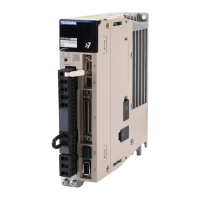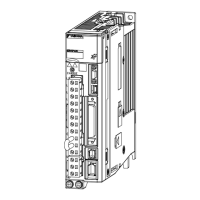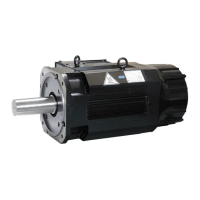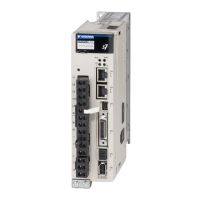8.6 Autotuning without Host Reference
8.6.6 Automatically Adjusted Function Settings
8-33
Vibration Suppression
You can use vibration suppression to suppress transitional vibration at a low frequency from 1
Hz to 100 Hz, which is generated mainly when the machine vibrates during positioning.
Normally, set Pn140 to n.1 (Adjust automatically) (default setting).
Vibration will be detected during autotuning without a host reference and vibration suppression
control will be automatically set.
Set Pn140 = n.0 (Do not adjust automatically) only if you do not change the settings for
vibration suppression before you execute autotuning without a host reference.
Note: Autotuning without a host reference uses model following control. Therefore, it can be executed only if the
mode is set to 2 or 3.
Friction Compensation
Friction compensation compensates for changes in the following conditions.
• Changes in the viscous resistance of the lubricant, such as grease, on the sliding parts of the
machine
• Changes in the friction resistance resulting from variations in the machine assembly
• Changes in the friction resistance due to aging
The conditions for applying friction compensation depend on the mode selection.
* Refer to the following section for details.
Required Parameter Settings on page 8-70
Feedforward
If Pn140 is set to n.0 (Do not use model following control and speed/torque feedforward
together (default setting)) and tuning is performed with the mode selection set to 2 or 3, feed-
forward (Pn109), the speed feedforward input (V-REF), and the torque feedforward input (T-
REF) will be disabled.
To use the speed feedforward input (V-REF), the torque feedforward input (T-REF), and model
following control from the host controller in the system, set Pn140 to n.1 (Use model fol-
lowing control and speed/torque feedforward together).
Refer to the following section for information on the torque feedforward input (T-REF) and the
speed feedforward input (V-REF).
Torque Feedforward and Speed Feedforward on page 8-86,
Speed Feedforward on page 8-87
Parameter Function When Enabled Classification
Pn140
n.
0
Do not adjust vibration suppression automati-
cally during execution of autotuning without a
host reference, autotuning with a host refer-
ence, and custom tuning.
Immediately Tuning
n.
1
(default setting)
Adjust vibration suppression automatically
during execution of autotuning without a host
reference, autotuning with a host reference,
and custom tuning.
Mode Selection Settings Friction Compensation
1: Standard
Based on the setting of Pn408 = n.X
(Friction Compensation Function Selection)
*
2: For position control
Adjusted with friction compensation.
3: For position control (emphasis on overshooting)
Parameter Function When Enabled Classification
Pn408
n. 0
(default setting)
Disable friction compensation.
Immediately Setup
n. 1
Enable friction compensation.
Parameter Function When Enabled Classification
Pn140
n.0
(default setting)
Do not use model following control and
speed/torque feedforward together.
Immediately Tuning
n.1
Use model following control and speed/torque
feedforward together.
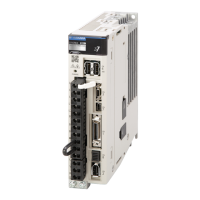
